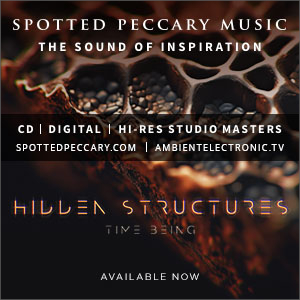The four latest updates come from an impressively august roster led by post-industrial pioneer, Asmus Tietchens, and Lord of lowercase, Steve Roden, with luminaries Stephan Mathieu (+ Caro Mikalef), and France Jobin in strong support.
Over the last decade Line has become synonymous with leading edge inquiry at the interface between digital minimalism and microsound. Main Line man, Richard Chartier, has steered it from inception—as not so much Evil as Difficult Twin of 12k—to a unique place in the vanguard of experimental and conceptual electronic music. As if to illustrate this, the four latest updates come from an impressively august roster led by post-industrial pioneer, Asmus Tietchens, and Lord of lowercase, Steve Roden, with luminaries Stephan Mathieu (+ Caro Mikalef), and France Jobin in strong support.
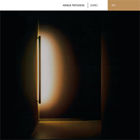
 What happens when you take a bunch of older compositions and recycle them (then recycle the outcome, then recycle them again… and again, ten times in total, for argument’s sake?). Soirée documents the findings of action research from Asmus Tietchens, who embarks on this inquiry into exponential recycling problematizing the notion of original musical creation in the current climate. Tietchens first fiddled with tape players, musique concrète, and electronic boxes of tricks, in the mid-60s, continuing through the 70s with futuristic proto-Kosmische (ending in a Peter Baumann of TD)-produced debut album) to diverse projects in the 80s/90s that saw him embraced by those of a more esoteric industrial persuasion. The veteran has thus shadowed the musico-technological Zeitgeist over four decades, poking into all manner of compositional nooks and process crannies along the way. Now well into his mid-60s, an extensive back catalogue on labels from Mille Plateaux and Die Stadt through Staalplaat to United Dairies behind him, he draws on a range of different methods and tools, morphing sources beyond Ur-tone to leave eight uneasy pieces, equal parts alien atmospheres and nervy nullity. Present spectrally, like the ectoplasm of the original, cryptic clatters and jittery jolts incide with sound-splice detritus whose corporeality has perdured the recycle mangle with varying degrees of damage. Attended by a sense of removal, as if a series of slide-bound specimens presented for inspection, it is, in this sense, a genuinely Experimental work, warts and all. Tietchens sternly propounds “absolute music,” implying manipulation of found sound in ways suggested by the material itself, and denying recourse to any outside frames of reference. Fair enough, but how is it to whistle in the shower? Samples: starter “p1B” startling with uncouth pings ceding to greyscale drone, static waves and alien audio events. “L2Rb” filling an unquiet void with clunking transmissions over a long thin wire from deep space; cousin “L2RD” transmuting the former’s queasy peripheralia to more alluring musicality – organic pianoid synth pulses revising the preceding digital alienation (“L2RC” later using some of the same tonal elements, framed differently again). “Nox 1,” a glassine dream of nocturnal hum punctuated by angular shards of metal, while “Nox 3″ looms up with wriggles, blips, and peculiar prefabs sprouted from field fiddlings, processed modulations and choral approximations. Unfamiliarity with Tietchen’s source material precludes before-and-after-science appraisal. These are shaky hand-held documents of listening objects moving from stillness towards motion and structure, propelling peals and evanescent excrescences through the aether, only to end in dusty dissolves, vaporous vanishings. Tietchens is compelled by the variety of results, and the wider recycling implications, querying the notion of the ‘original’ and the sanctity of the individual act of creation—the spawning of ever more ‘new’ musical expressions when one existing piece can yield endless distinct derivations. Ambience-chasing Line-lovers will likely be left cold by the concept and its articulation via these austere and elusive sketches. Soirée’s world is one of twilight zone tintinnabulations that sits sternly at the Absolute (as in Music) end of the Line continuum—in a concrète bunker where friends of Schaeffer and Stockhausen reunite; Line has the textural indulgence angle covered by Stephan Mathieu (see below), so let them have their Soirée. Buy at Line, Amazon, iTunes or Juno.
What happens when you take a bunch of older compositions and recycle them (then recycle the outcome, then recycle them again… and again, ten times in total, for argument’s sake?). Soirée documents the findings of action research from Asmus Tietchens, who embarks on this inquiry into exponential recycling problematizing the notion of original musical creation in the current climate. Tietchens first fiddled with tape players, musique concrète, and electronic boxes of tricks, in the mid-60s, continuing through the 70s with futuristic proto-Kosmische (ending in a Peter Baumann of TD)-produced debut album) to diverse projects in the 80s/90s that saw him embraced by those of a more esoteric industrial persuasion. The veteran has thus shadowed the musico-technological Zeitgeist over four decades, poking into all manner of compositional nooks and process crannies along the way. Now well into his mid-60s, an extensive back catalogue on labels from Mille Plateaux and Die Stadt through Staalplaat to United Dairies behind him, he draws on a range of different methods and tools, morphing sources beyond Ur-tone to leave eight uneasy pieces, equal parts alien atmospheres and nervy nullity. Present spectrally, like the ectoplasm of the original, cryptic clatters and jittery jolts incide with sound-splice detritus whose corporeality has perdured the recycle mangle with varying degrees of damage. Attended by a sense of removal, as if a series of slide-bound specimens presented for inspection, it is, in this sense, a genuinely Experimental work, warts and all. Tietchens sternly propounds “absolute music,” implying manipulation of found sound in ways suggested by the material itself, and denying recourse to any outside frames of reference. Fair enough, but how is it to whistle in the shower? Samples: starter “p1B” startling with uncouth pings ceding to greyscale drone, static waves and alien audio events. “L2Rb” filling an unquiet void with clunking transmissions over a long thin wire from deep space; cousin “L2RD” transmuting the former’s queasy peripheralia to more alluring musicality – organic pianoid synth pulses revising the preceding digital alienation (“L2RC” later using some of the same tonal elements, framed differently again). “Nox 1,” a glassine dream of nocturnal hum punctuated by angular shards of metal, while “Nox 3″ looms up with wriggles, blips, and peculiar prefabs sprouted from field fiddlings, processed modulations and choral approximations. Unfamiliarity with Tietchen’s source material precludes before-and-after-science appraisal. These are shaky hand-held documents of listening objects moving from stillness towards motion and structure, propelling peals and evanescent excrescences through the aether, only to end in dusty dissolves, vaporous vanishings. Tietchens is compelled by the variety of results, and the wider recycling implications, querying the notion of the ‘original’ and the sanctity of the individual act of creation—the spawning of ever more ‘new’ musical expressions when one existing piece can yield endless distinct derivations. Ambience-chasing Line-lovers will likely be left cold by the concept and its articulation via these austere and elusive sketches. Soirée’s world is one of twilight zone tintinnabulations that sits sternly at the Absolute (as in Music) end of the Line continuum—in a concrète bunker where friends of Schaeffer and Stockhausen reunite; Line has the textural indulgence angle covered by Stephan Mathieu (see below), so let them have their Soirée. Buy at Line, Amazon, iTunes or Juno.
——————————
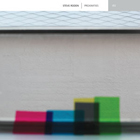
 Next up, Steve Roden, old hand of a new wave of experimentation after Tietchens, brings his signature lowercase sound back into Line with Proximities, his first for the label since 2005’s Airforms. For the uninitiated, the LA sound artist’s works typically involve electronic derivations from singular sources—objects or spaces abstracted to throw up ‘possible landscapes,’ with source staying somewhere in sight as a kind of formal skeleton peeking through fleeting see-through moments in the resultant pieces. Roden’s creationist seed is typically sown into an existing real-world entity, here a text by minimalist sculptor Donald Judd (the letters A-G as found in the text determining the tone sequence), a an old battery-powered Paia Oz synthesizer recorded with an H4 digital recorder, iPhone and a cheap Sony micro-cassette among 50 of Judd’s stainless steel sculptures (n.b. during sunrise) (p.s. in an old army barracks converted into a museum). The devices emitted audio of previous performances, attenuated swells and billows compiled by Roden of his recordings of the shifting notes of his synthesizer emitted from their tiny speakers intermittently; he also hummed, and the effect of sunrise caused the sculpture’s expansion, producing the odd crepitation. Proximities thus potentiates Judd’s hitherto mute artwork with new voice, characterized by subtle melodic phrases and elliptical loopings. Liminal pedal to minimal metal, once established it opens out while remaining static, absence of low-end underpinning leaving these attenuated timbres to float like dust in light rays, the sight below a mechanical bed of machine noise and hiss, the gentle rise-fall of its spartan sound mirroring the early morning haze. A slow build leads to a loose coupling of thin tonal carpet with a grimier underlay, sourced from lo-fi audio detritus. As ending draws near, basic tonal vocabulary remains constant, though with a greater sense of chaos and fluidity, all around eventually disintegrating to leave only the hollow site of recording audible. A flat plain structure of ebb and flow—shifting layers of synth, faintly echoing early Eno. At times, the tones are long drawn out dwellings on a single note, while at others there are shifts between different notes, their resonance yielding an array of subtle overtones. The passages’ configuration overall is thematic, but not premised on recursion, with something else always stirring beneath. Frail shy sonorities peek out then withdraw into their soundscape shell, attended by remote room sounds—a continuous grainy presence. Minimal, expansive, solemn and poignant, wavering, disintegrative, a-sizzle like the morning’s breakfast rashers, it projects a meditative disposition of inner quiet, natural and delicate, a ‘neutral’ ground-field with a disposition to host whatever figure imagination might present the listener. In this sense, Roden engineers in Proximities a truly environmental music through his consummate mediation of space and its audio contents. Buy at Line, Amazon, iTunes or Juno.
Next up, Steve Roden, old hand of a new wave of experimentation after Tietchens, brings his signature lowercase sound back into Line with Proximities, his first for the label since 2005’s Airforms. For the uninitiated, the LA sound artist’s works typically involve electronic derivations from singular sources—objects or spaces abstracted to throw up ‘possible landscapes,’ with source staying somewhere in sight as a kind of formal skeleton peeking through fleeting see-through moments in the resultant pieces. Roden’s creationist seed is typically sown into an existing real-world entity, here a text by minimalist sculptor Donald Judd (the letters A-G as found in the text determining the tone sequence), a an old battery-powered Paia Oz synthesizer recorded with an H4 digital recorder, iPhone and a cheap Sony micro-cassette among 50 of Judd’s stainless steel sculptures (n.b. during sunrise) (p.s. in an old army barracks converted into a museum). The devices emitted audio of previous performances, attenuated swells and billows compiled by Roden of his recordings of the shifting notes of his synthesizer emitted from their tiny speakers intermittently; he also hummed, and the effect of sunrise caused the sculpture’s expansion, producing the odd crepitation. Proximities thus potentiates Judd’s hitherto mute artwork with new voice, characterized by subtle melodic phrases and elliptical loopings. Liminal pedal to minimal metal, once established it opens out while remaining static, absence of low-end underpinning leaving these attenuated timbres to float like dust in light rays, the sight below a mechanical bed of machine noise and hiss, the gentle rise-fall of its spartan sound mirroring the early morning haze. A slow build leads to a loose coupling of thin tonal carpet with a grimier underlay, sourced from lo-fi audio detritus. As ending draws near, basic tonal vocabulary remains constant, though with a greater sense of chaos and fluidity, all around eventually disintegrating to leave only the hollow site of recording audible. A flat plain structure of ebb and flow—shifting layers of synth, faintly echoing early Eno. At times, the tones are long drawn out dwellings on a single note, while at others there are shifts between different notes, their resonance yielding an array of subtle overtones. The passages’ configuration overall is thematic, but not premised on recursion, with something else always stirring beneath. Frail shy sonorities peek out then withdraw into their soundscape shell, attended by remote room sounds—a continuous grainy presence. Minimal, expansive, solemn and poignant, wavering, disintegrative, a-sizzle like the morning’s breakfast rashers, it projects a meditative disposition of inner quiet, natural and delicate, a ‘neutral’ ground-field with a disposition to host whatever figure imagination might present the listener. In this sense, Roden engineers in Proximities a truly environmental music through his consummate mediation of space and its audio contents. Buy at Line, Amazon, iTunes or Juno.
——————————
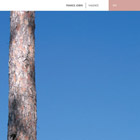
 Montreal’s France Jobin francejobin.com purveys a kind of audio art in the realm of Roden rather than the Tietchens tradition; quiet sound-sculptures at the intersection of analogue and digital, of musical and visual. Valence is a kind of coming out, previous recordings bearing the i8u alias—on Room40, Non Visual Objects and Dragons Eye. The last mentioned label’s 29 Palms had showcased the artist’s subtle sleight of hand in ‘ambiguous atmospheres unfolding out of a seemingly infinitely creatively configurable trio of materials—synthetic sustain, wavering tonalities and digital crackle—that commingle with occasional emergent harmonics.’ Created entirely from transformed field recordings (of uncertain provenance), i8u familars will find Valence imbued with a similar pared back flowing minimalism, a discreet fishing in interstitial pools that’s become a trademark. As such it feels less like a change of substance than a further refined version of i8u’s delicate pointillism, though there’s seems a clearer and more present affective steer—away from doleful or dark—more glowing than glowering. It feels more integral, likely linked to Jobin’s incorporation of once lumpy lows into a more lissom high-mid spectrum. Press patter invoking Eliane Radigue and Celer is, in spirit rather than literal sound, on the mark, though the latter seems a more pertinent reference, these deep meditative slow harmonic modulations swimming in similarly solicitously designed translucence; slow-shutter sonics draw into a micro-world of heightened focus – a gentle gossamer drift, weaving a nature tone poem, albeit one studded with odd UHF flickers. Liminal is most definitely the word for the unbearable lightness of opener, “S Orbital,” while the following “P Orbital” is a little less shy and retiring, even generous in passages distinguished by microtonal minutiae, lingering long on designed apertures and occlusions, frequency isolations suspended between pin-sharp high pitches and softer focus harmonic colour forms. Valence draws inspiration from both the valence bond and molecular orbital theories, ignorance of which thankfully doesn’t pre-empt appreciation—though doubtless it would be further enhanced by consciousness of the parallels between quantum theory and compositional incertitude, between the emotional ambiguity of a work-in-process and molecular instability (reading from crib sheet). Ultimately, flipping from critic to fan, and recourse to ‘I don’t know much about Biochemistry, but I know what I like’ protestations, Valence offers plenty of an absolute musical quality here (particularly on the more fulsome final “D Orbital”) to allure the listening ear, particularly one of a dry-loving ellipsis-seeking inclination. Uncompromisingly minimal and steeped in eventlessness it may be, yet for all that, Jobin achieves a satisfying continuous dialectic—between mid-range sustain and high-end microsonic motion, a suture of binaries of replete evacuation and expansive intimacy. Buy at Line, Amazon, iTunes or Juno.
Montreal’s France Jobin francejobin.com purveys a kind of audio art in the realm of Roden rather than the Tietchens tradition; quiet sound-sculptures at the intersection of analogue and digital, of musical and visual. Valence is a kind of coming out, previous recordings bearing the i8u alias—on Room40, Non Visual Objects and Dragons Eye. The last mentioned label’s 29 Palms had showcased the artist’s subtle sleight of hand in ‘ambiguous atmospheres unfolding out of a seemingly infinitely creatively configurable trio of materials—synthetic sustain, wavering tonalities and digital crackle—that commingle with occasional emergent harmonics.’ Created entirely from transformed field recordings (of uncertain provenance), i8u familars will find Valence imbued with a similar pared back flowing minimalism, a discreet fishing in interstitial pools that’s become a trademark. As such it feels less like a change of substance than a further refined version of i8u’s delicate pointillism, though there’s seems a clearer and more present affective steer—away from doleful or dark—more glowing than glowering. It feels more integral, likely linked to Jobin’s incorporation of once lumpy lows into a more lissom high-mid spectrum. Press patter invoking Eliane Radigue and Celer is, in spirit rather than literal sound, on the mark, though the latter seems a more pertinent reference, these deep meditative slow harmonic modulations swimming in similarly solicitously designed translucence; slow-shutter sonics draw into a micro-world of heightened focus – a gentle gossamer drift, weaving a nature tone poem, albeit one studded with odd UHF flickers. Liminal is most definitely the word for the unbearable lightness of opener, “S Orbital,” while the following “P Orbital” is a little less shy and retiring, even generous in passages distinguished by microtonal minutiae, lingering long on designed apertures and occlusions, frequency isolations suspended between pin-sharp high pitches and softer focus harmonic colour forms. Valence draws inspiration from both the valence bond and molecular orbital theories, ignorance of which thankfully doesn’t pre-empt appreciation—though doubtless it would be further enhanced by consciousness of the parallels between quantum theory and compositional incertitude, between the emotional ambiguity of a work-in-process and molecular instability (reading from crib sheet). Ultimately, flipping from critic to fan, and recourse to ‘I don’t know much about Biochemistry, but I know what I like’ protestations, Valence offers plenty of an absolute musical quality here (particularly on the more fulsome final “D Orbital”) to allure the listening ear, particularly one of a dry-loving ellipsis-seeking inclination. Uncompromisingly minimal and steeped in eventlessness it may be, yet for all that, Jobin achieves a satisfying continuous dialectic—between mid-range sustain and high-end microsonic motion, a suture of binaries of replete evacuation and expansive intimacy. Buy at Line, Amazon, iTunes or Juno.
——————————
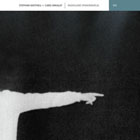
 Finally, the embers of last year’s Remain still a-glow, Stephan Mathieu gets back on Line with another long form work, Radioland (Panorámica). Originally an audiovisual piece commissioned for Panorámica, performed live in Buenos Aires, Mathieu enlists Argentine artist Caro Mikalef to play his live body double: she specializes in octave virginals and ebowed Phonoharp zither, Mathieu’s lately favoured early instruments, freeing him up to take charge of shortwave radio and processing (plus overseeing a setup comprising two Fender Twin amps, an Ampeg SVT-810 and a 21 x 4m video projection). This live release’s relation to Mathieu’s previous Radioland is more one of shared process than sonic outcome: where that studio-bound Radioland was the outcome of sifting through and editing down hours of material, this live incarnation foregrounds aleatory and improvisational aspects; and the studio version represented one of several possible narratives stitched up disjunctively from prefabricated performance, whereas live capture allows for more exploratory navigations to extend and merge into an organic whole. Prelude: a soundmass, slowly moving, a distant rumble, undulating, ebbing and flowing, just above the event horizon, the sound envelope seemingly solid, inaccessible, as if a sonic black hole with a faint pulse within. Then the soundfield expands, a miasma of modulations melting into a static plasmatic space, vibrations in slow-mo outfolding. Chronostatic scanes, diverse upwellings, an echoing delight of timbres, receding once registered. It alternates between shimmering expansive tonal passages and more dissonant textural layers of delicate static, sometimes seemingly infinite strings, occasionally a fugitive radio transmission peeking through. A mellifluous aural nectar stream bordering on virtual choir whose song is formed of harmonic aggregates clusters of varying density and tone colour, washed out to saturated. A nebulous suspension of microtone drone and excavated harmonics, simultaneously expansive and densely tesselated. While imbued with the customary Mathieu sound and sensibility, Radioland (Panorámica) is a bit rawer, with dips into dissonance, particularly around halfway where an ominous tone sets in, the final dénouement setting sumptuous tones against a reverberant rapture of metals and a rising tide of white noise, ending not so much in ascent as an absorbing murk. So, though organic sound sources and live recording partly make for an enhancement of the signature warmth and luxuriance for which he is justly renowned, this is ultimately a more tenebrous piece than Mathieu standard, though no less engaging for it. Buy at Line, Amazon or iTunes.
Finally, the embers of last year’s Remain still a-glow, Stephan Mathieu gets back on Line with another long form work, Radioland (Panorámica). Originally an audiovisual piece commissioned for Panorámica, performed live in Buenos Aires, Mathieu enlists Argentine artist Caro Mikalef to play his live body double: she specializes in octave virginals and ebowed Phonoharp zither, Mathieu’s lately favoured early instruments, freeing him up to take charge of shortwave radio and processing (plus overseeing a setup comprising two Fender Twin amps, an Ampeg SVT-810 and a 21 x 4m video projection). This live release’s relation to Mathieu’s previous Radioland is more one of shared process than sonic outcome: where that studio-bound Radioland was the outcome of sifting through and editing down hours of material, this live incarnation foregrounds aleatory and improvisational aspects; and the studio version represented one of several possible narratives stitched up disjunctively from prefabricated performance, whereas live capture allows for more exploratory navigations to extend and merge into an organic whole. Prelude: a soundmass, slowly moving, a distant rumble, undulating, ebbing and flowing, just above the event horizon, the sound envelope seemingly solid, inaccessible, as if a sonic black hole with a faint pulse within. Then the soundfield expands, a miasma of modulations melting into a static plasmatic space, vibrations in slow-mo outfolding. Chronostatic scanes, diverse upwellings, an echoing delight of timbres, receding once registered. It alternates between shimmering expansive tonal passages and more dissonant textural layers of delicate static, sometimes seemingly infinite strings, occasionally a fugitive radio transmission peeking through. A mellifluous aural nectar stream bordering on virtual choir whose song is formed of harmonic aggregates clusters of varying density and tone colour, washed out to saturated. A nebulous suspension of microtone drone and excavated harmonics, simultaneously expansive and densely tesselated. While imbued with the customary Mathieu sound and sensibility, Radioland (Panorámica) is a bit rawer, with dips into dissonance, particularly around halfway where an ominous tone sets in, the final dénouement setting sumptuous tones against a reverberant rapture of metals and a rising tide of white noise, ending not so much in ascent as an absorbing murk. So, though organic sound sources and live recording partly make for an enhancement of the signature warmth and luxuriance for which he is justly renowned, this is ultimately a more tenebrous piece than Mathieu standard, though no less engaging for it. Buy at Line, Amazon or iTunes.
——————————
All releases are available on Line.
Buy Soirée at Line, Amazon, iTunes or Juno.
Buy Proximities at Line, Amazon, iTunes or Juno.
Buy Valence at Line, Amazon, iTunes or Juno.
Buy Radioland (Panorámica) at Line, Amazon or iTunes.






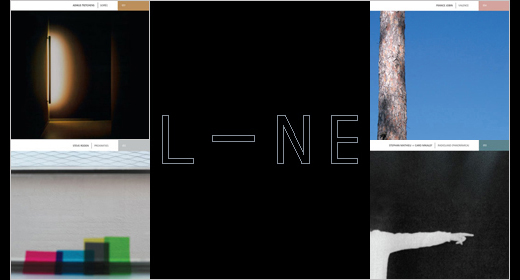
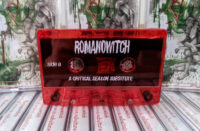
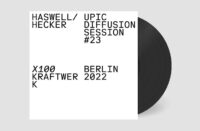
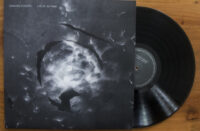

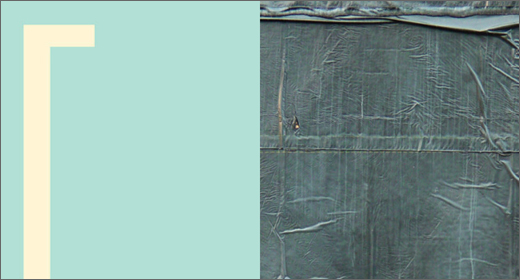
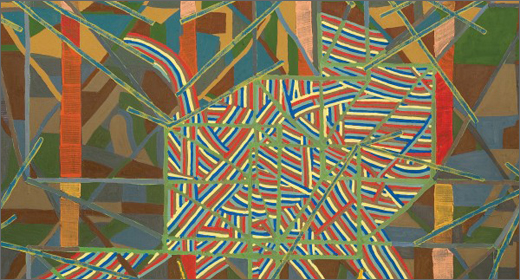

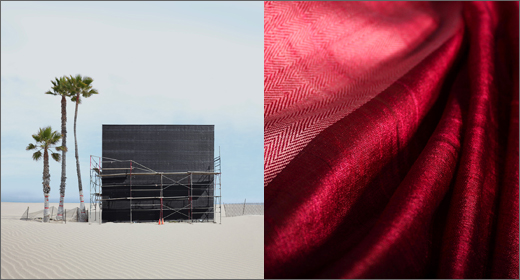
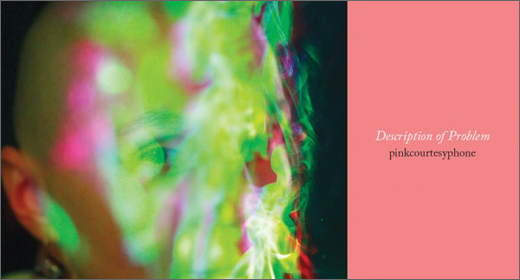
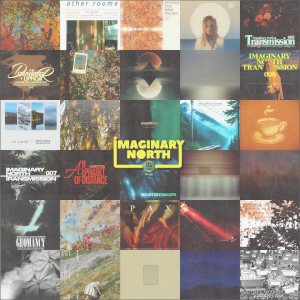
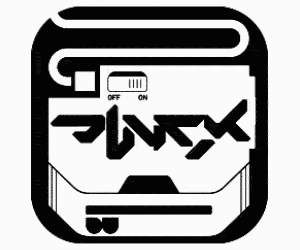
![Romanowitch :: A critical season substitute (glitch.cool) — [concise]](https://igloomag.com/wp/wp-content/uploads/2025/03/romanowitch-a-critical-season-substitute_tape_feat-75x75.jpg)







